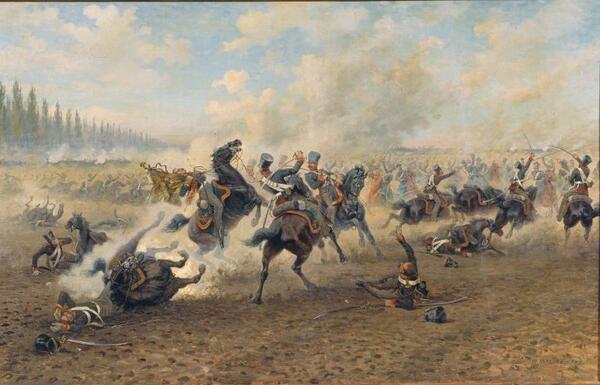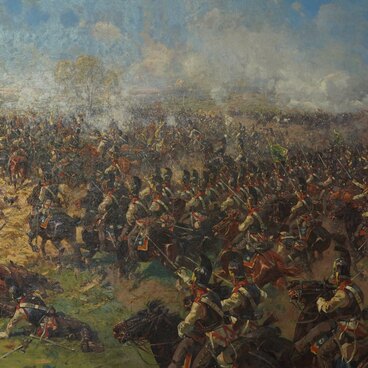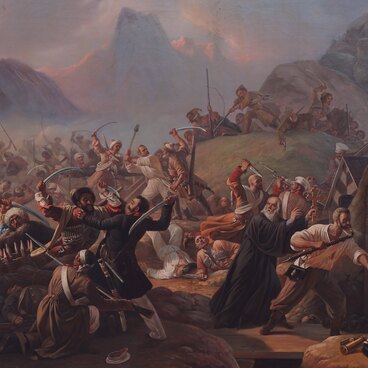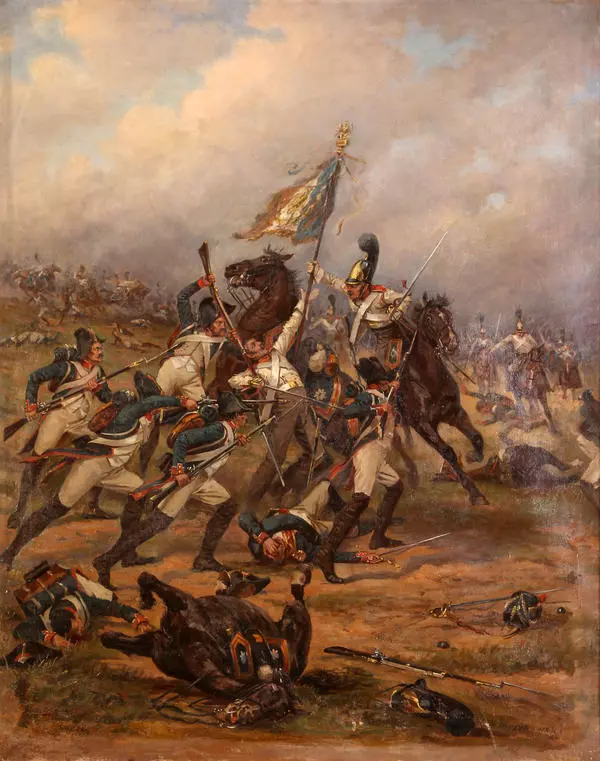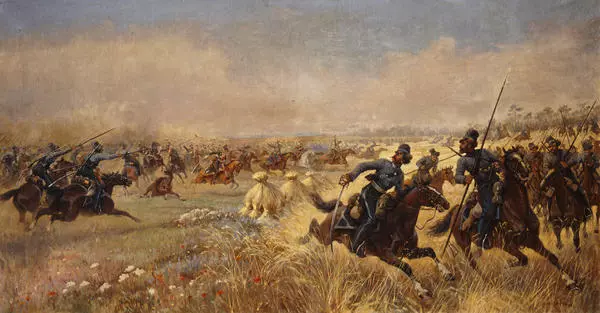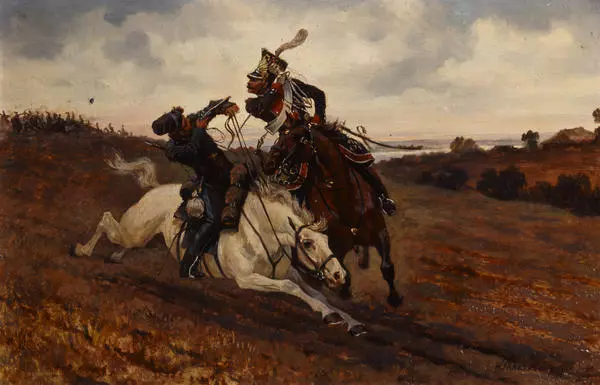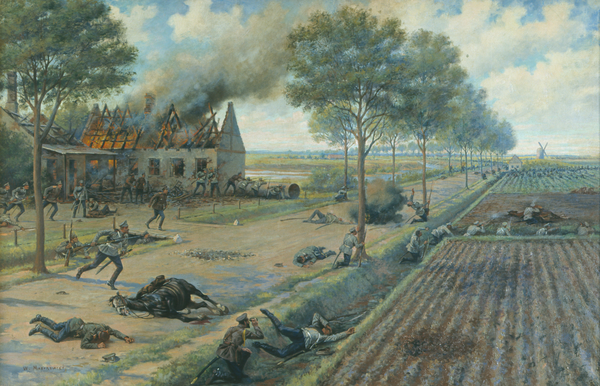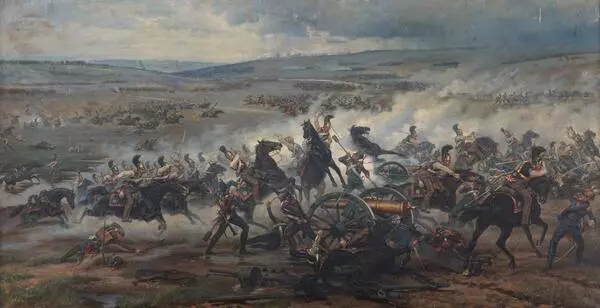The Congress of Vienna was held in 1815 and put an end to the Napoleonic Wars. It decided that the Russian Empire was to receive the Duchy of Warsaw and the territories of Lithuania.
Grand Duke Konstantin Pavlovich (1779–1831) was appointed Viceroy of Poland. He did a lot for Russian Poland, especially for the army, which consisted of many veterans of the Napoleonic Wars. However, the Poles did not want to recognize the patronage and supremacy of the Russian Empire.
In 1830, the army of the Kingdom of Poland was to fight together with the Russian troops in Belgium, where a revolution had started. However, on November 17, an uprising against the Russians broke out in Warsaw. Grand Duke was almost killed by the conspirators and retreated to Russia with a detachment of Russian guards, but only to return with reinforcements. Emperor Nicholas I sent Grenadier and Guards Corps to suppress the well-trained rebel army.
The main role in subduing the rebellion was assigned to Count Ivan Fyodorovich Paskevich. After a series of battles, having pushed the rebels back to Warsaw, he entered into negotiations with Count Jan Krukowiecki. The Poles rejected the terms of surrender claiming that they “took up arms to fight for sovereignty” of their borders that separated them and Russia.
On August 26 (September 7), 1831, the Russian troops stormed Warsaw. Early in the morning on August 27 (September 8), the Russian Army entered Warsaw, and Paskevich sent a dispatch to the sovereign with the words “Warsaw is at Your Majesty’s feet.”
The Varsovian battle artist and graduate of the St. Petersburg Academy of Arts Viktor Vikentievich Mazurovsky (1859–1944) who painted this canvas chose to depict the battle on the Mokotów Field that took place on August 26 as the subject of his painting.
Four Polish regiments attacked the Life Guards Dragoon Regiment led by Major General Cornelius Saß. Within an hour, the Russians fought off the enemy and suffered heavy losses. General Saß was wounded. A Polish cannonball mortally wounded standard-bearing cadet Rumovsky, and the shaft of the standard was broken into pieces. Thanks to the Life Guards Hussar Regiment that arrived in time, the Russian army won.
For the valor they demonstrated, the Life Dragoon regiment was renamed the Life Guards Horse Regiment, and its ranks were awarded insignia. That included special helmets and epaulettes with a metal field and a fringe of woolen red threads. General Saß was presented to the Order of St. George, 4th class.
Grand Duke Konstantin Pavlovich (1779–1831) was appointed Viceroy of Poland. He did a lot for Russian Poland, especially for the army, which consisted of many veterans of the Napoleonic Wars. However, the Poles did not want to recognize the patronage and supremacy of the Russian Empire.
In 1830, the army of the Kingdom of Poland was to fight together with the Russian troops in Belgium, where a revolution had started. However, on November 17, an uprising against the Russians broke out in Warsaw. Grand Duke was almost killed by the conspirators and retreated to Russia with a detachment of Russian guards, but only to return with reinforcements. Emperor Nicholas I sent Grenadier and Guards Corps to suppress the well-trained rebel army.
The main role in subduing the rebellion was assigned to Count Ivan Fyodorovich Paskevich. After a series of battles, having pushed the rebels back to Warsaw, he entered into negotiations with Count Jan Krukowiecki. The Poles rejected the terms of surrender claiming that they “took up arms to fight for sovereignty” of their borders that separated them and Russia.
On August 26 (September 7), 1831, the Russian troops stormed Warsaw. Early in the morning on August 27 (September 8), the Russian Army entered Warsaw, and Paskevich sent a dispatch to the sovereign with the words “Warsaw is at Your Majesty’s feet.”
The Varsovian battle artist and graduate of the St. Petersburg Academy of Arts Viktor Vikentievich Mazurovsky (1859–1944) who painted this canvas chose to depict the battle on the Mokotów Field that took place on August 26 as the subject of his painting.
Four Polish regiments attacked the Life Guards Dragoon Regiment led by Major General Cornelius Saß. Within an hour, the Russians fought off the enemy and suffered heavy losses. General Saß was wounded. A Polish cannonball mortally wounded standard-bearing cadet Rumovsky, and the shaft of the standard was broken into pieces. Thanks to the Life Guards Hussar Regiment that arrived in time, the Russian army won.
For the valor they demonstrated, the Life Dragoon regiment was renamed the Life Guards Horse Regiment, and its ranks were awarded insignia. That included special helmets and epaulettes with a metal field and a fringe of woolen red threads. General Saß was presented to the Order of St. George, 4th class.

